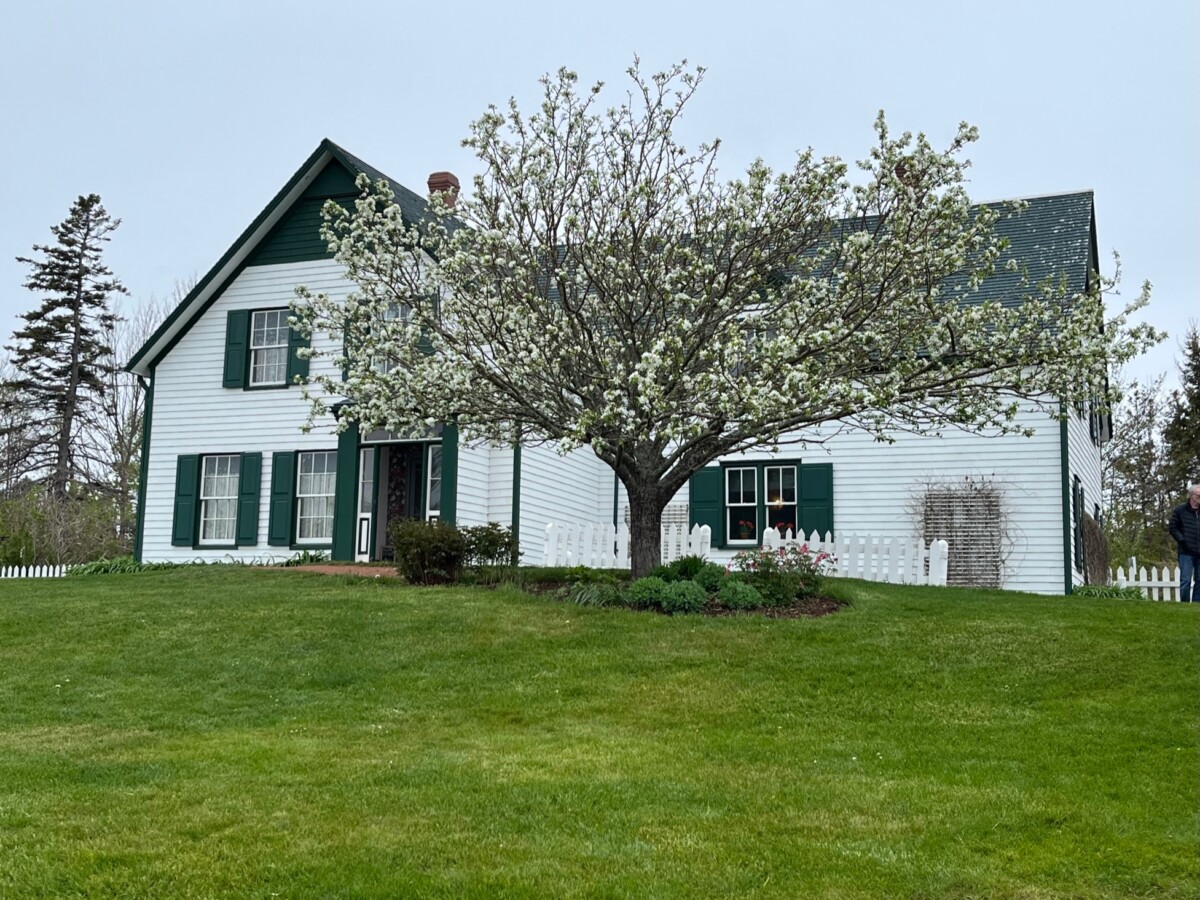“Anne of Green Gables” is a favorite childhood book for many kids. Similar to “Little House on the Prairie,” the novel details a girl living on a farm in the 19th century. Although I didn’t pick up the first “Anne of Green Gables” book until my adult years, I quickly became enchanted with the character Anne and the setting in Prince Edward Island.
Anne of Green Gables Books
Set on the northern shores of PEI, “Anne of Green Gables” highlights the adventures of Anne Shirley an 11-year-old, red-haired girl with braids. The precocious orphan arrives in Avonlea, the fictional town based on Cavendish, when she is adopted by an elderly brother and sister who need help on their farm. The Cuthberts requested a boy, not a girl, to live with them, but the agency made a mistake – and so the adventures begin!
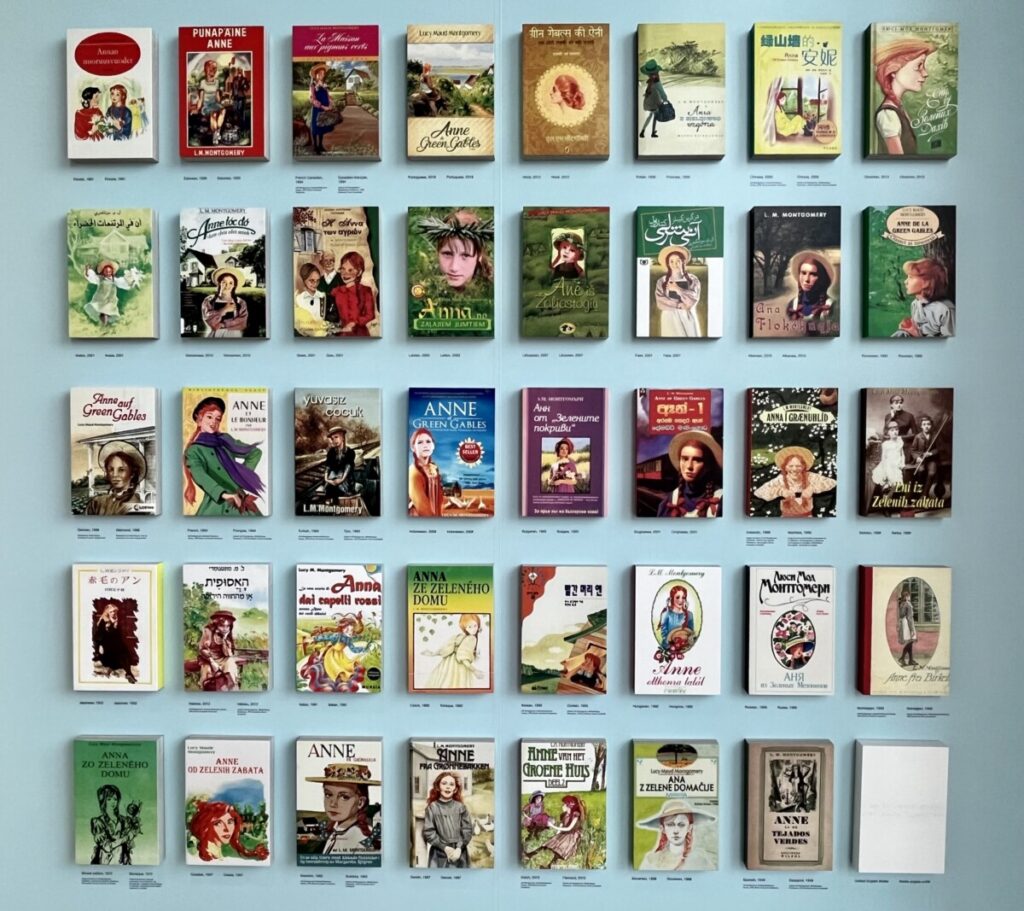
Following the popularity of the first book in 1908, author Lucy Maud Montgomery published sequels. While the series takes Anne from a child to a teacher, wife, and mother, the first two books focus on Anne’s coming of age at Matthew and Marilla Cuthbert’s farm. Montgomery based those books on the Macneill Farm, where she spent time with her grandfather’s cousins.
Green Gables Heritage Site
Fortunately, the Canadian government purchased the property when establishing PEI National Park in 1937. The 2,400-acre property consists of the restored farmhouse, several walking trails, a cafe, and outbuildings. Sensing a need to highlight Montgomery’s life, Parks Canada completed a $6 million interpretive center on the site in 2019.

Green Gables Farmhouse
We headed straight to the farmhouse. True to its name, the white clapboard house featured a green-gabled roof. However, some fans feel disappointed to learn Montgomery didn’t actually live here.
In 1864, Montgomery was born six miles away in New London. After her mother’s death, she lived with her maternal grandparents in Cavendish. When her grandmother passed away in 1911, she briefly lived with an aunt at Campbell House, until her marriage later that year. Fans can visit these and other houses on PEI that influenced Montgomery. Check out this website to learn more about them.
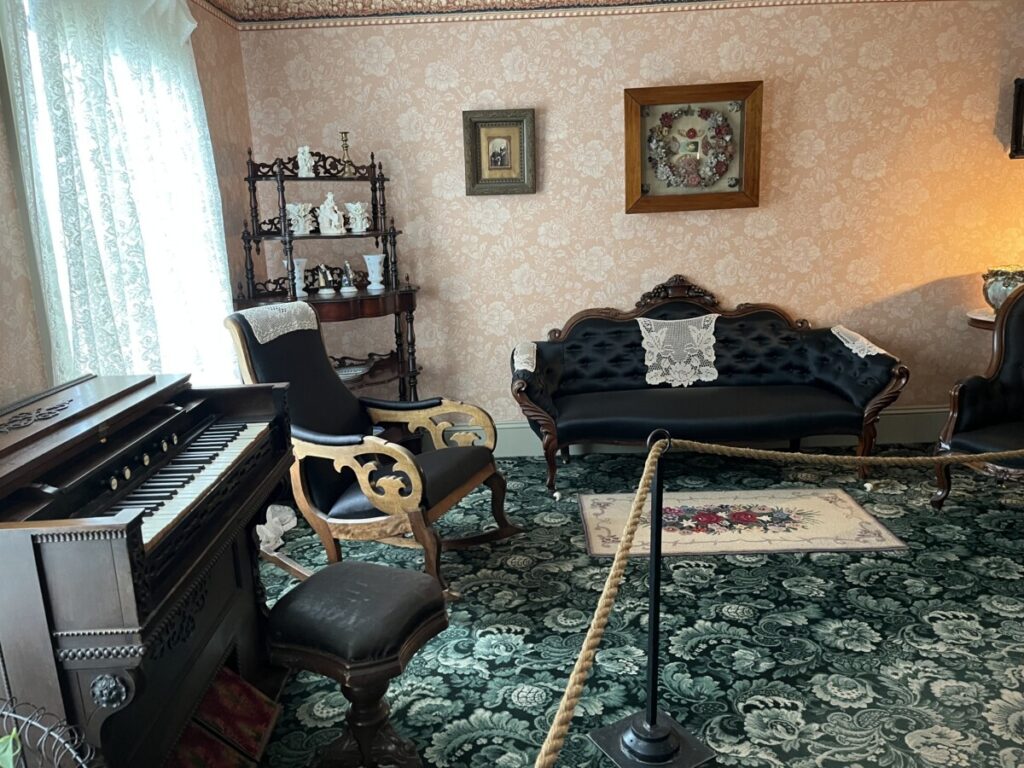
You can imagine how boring life must have been for an only child living with elderly relatives – especially in the 1870s without radio, TV, or other entertainment. Montgomery often found solace exploring the trails at the adjacent Macneill farm, the site of Green Gables Heritage Place. Siblings David and Margaret Macneill, cousins of Montgomery’s grandfather, owned the 100-acre farm and became the inspiration for Matthew and Marilla Cuthbert in the book series.
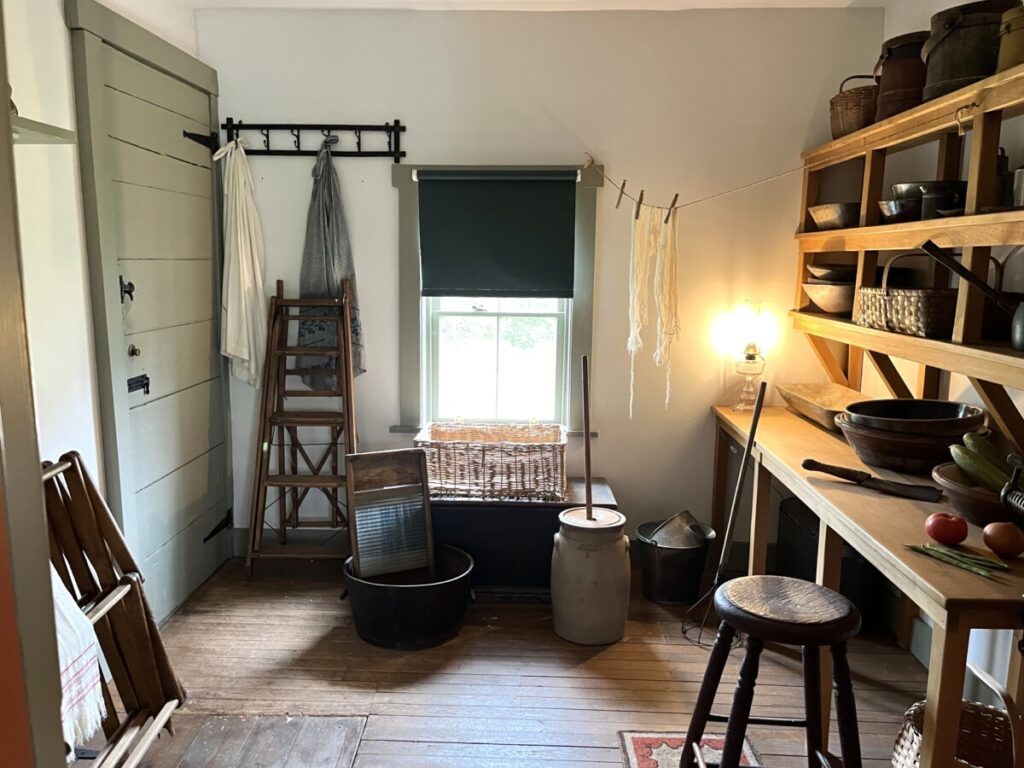
A younger cousin, Myrtle Macneill moved to the farm in the 1890s and provided companionship for Montgomery. In fact, Montgomery often stayed at the house on return visits to the island. After the book’s popularity, Mytle Macneill (now Webb) and her husband renamed the property Green Gables, sold tourist items, and opened rooms for boarders until its sale to Parks Canada in 1937.
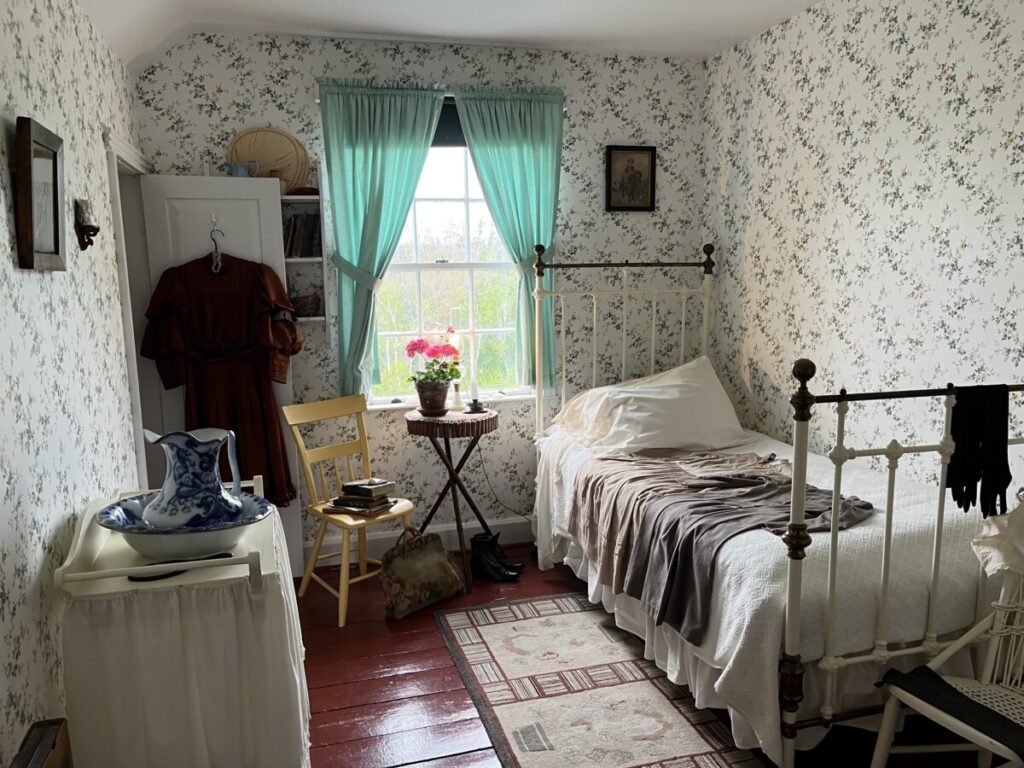
The farmhouse showcases furnishings from the late 18th century arranged to resemble the fictional Cuthbert’s farm. The bedrooms of Matthew, Marilla, and Anne are decorated with details from the novel. Guests see rudimentary tools as well – chamber pots, a wood-burning stove, a butter churn, a washboard, and a pressing iron.
Green Gables Trails
Outside the farmhouse, we walked past a small vegetable garden. On the other side of the picket fence, we explored the half-mile Lovers Lane Trail. While short, the path follows a stream where blue and purple wildflowers abound. Montgomery often sought solitude here.

While DH (Dear Hubby) caught up on emails, I walked the Haunted Woods Trail. This short trail leads to Montgomery Park and the Cavendish Cemetery. Plaques with quotes from Montgomery’s writings dot the landscape. The trail also leads to the ruins of the home where Anne lived with her grandparents. While privately owned, guests can tour this spot for a nominal fee and see the kitchen building where Montgomery wrote her novels.
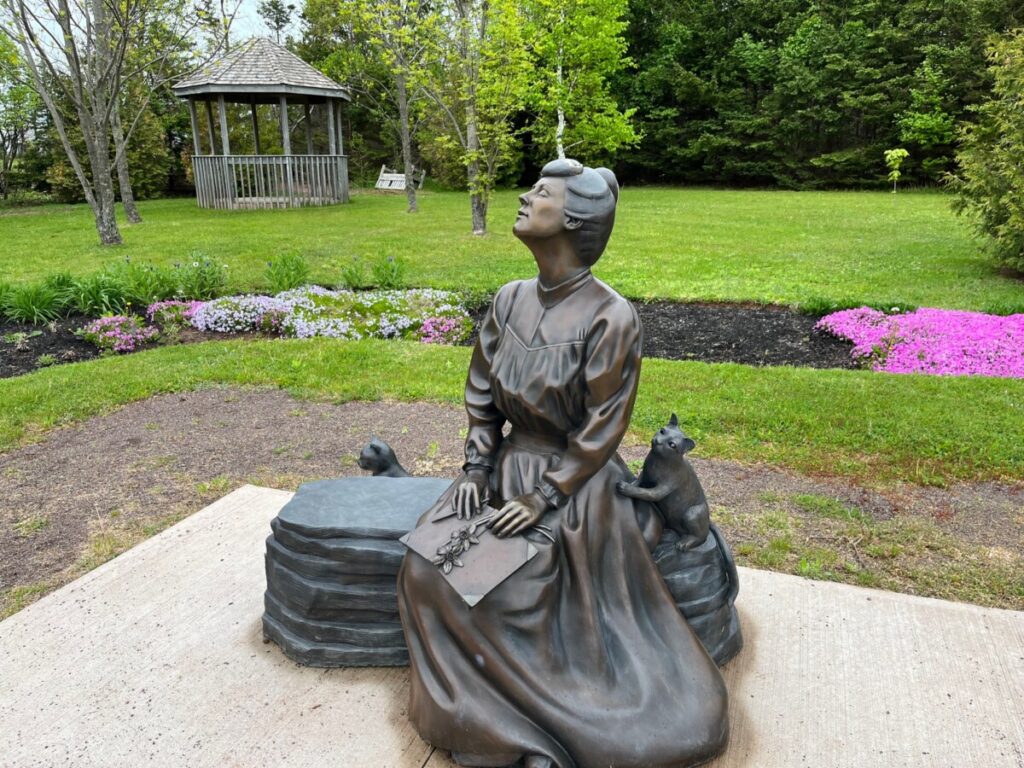
I felt reacquainted with the character Anne during the visit, but what about the author? We got a cup of coffee and a cookie at the cafe and set out for the visitor/interpretive center to learn about Montgomery.
Green Gables Interpretive/Visitor Center
Powered by solar energy, the LEED-certified building houses park offices, a ticket booth, a gift shop, and most notably – an extensive exhibit about Montgomery. Displays include a model of Green Gables built from Legos, a timeline of Montgomery’s life, and an original page of the “Anne of Green Gables” manuscript written by hand.

Montgomery taught school for several years and even attended Dalhousie University (rare for a woman at that time). After her grandfather died in 1898, she came back to Cavendish to live with her grandmother until her death. During this time, her writing career took off with the publication of “Anne of Green Gables” and “Anne of Avonlea.”
In her late 30s, Montgomery married Presbyterian minister, Ewan MacDonald. While raising her family in Ontario, she lost an infant son and dealt with her husband’s mental health issues. Suffering from depression herself, Montgomery died at age 67. In her lifetime, Montgomery wrote 20 novels and over 500 short stories and poems.
Conclusion
If you only have time to visit one “Anne of Green Gables” spot, I recommend the Green Gables Heritage Site. Not only do visitors learn about the author, but they also get to walk through the fictional Cuthbert’s farmhouse. The trails add opportunities to enjoy PEI and quiet contemplation.
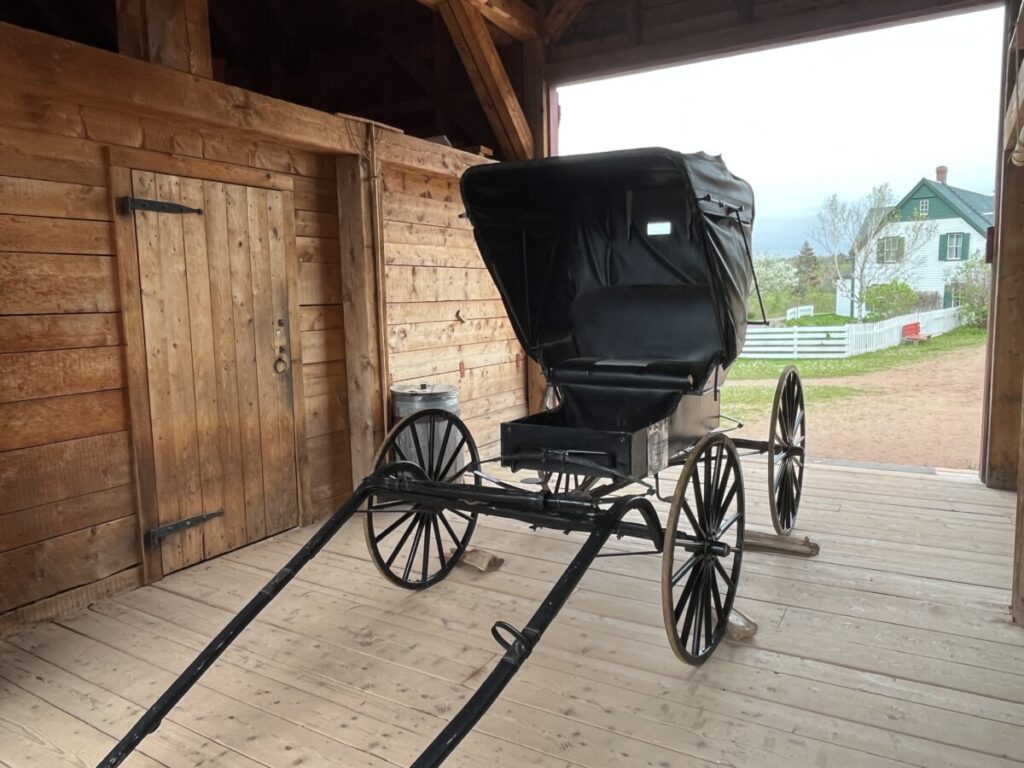
The site is only open seasonally from May to October. However, special Christmas and holiday programs occur throughout the year. For more information, visit the Green Gables Heritage Site website here. To learn more about the novel “Anne of Green Gables,” click here.
